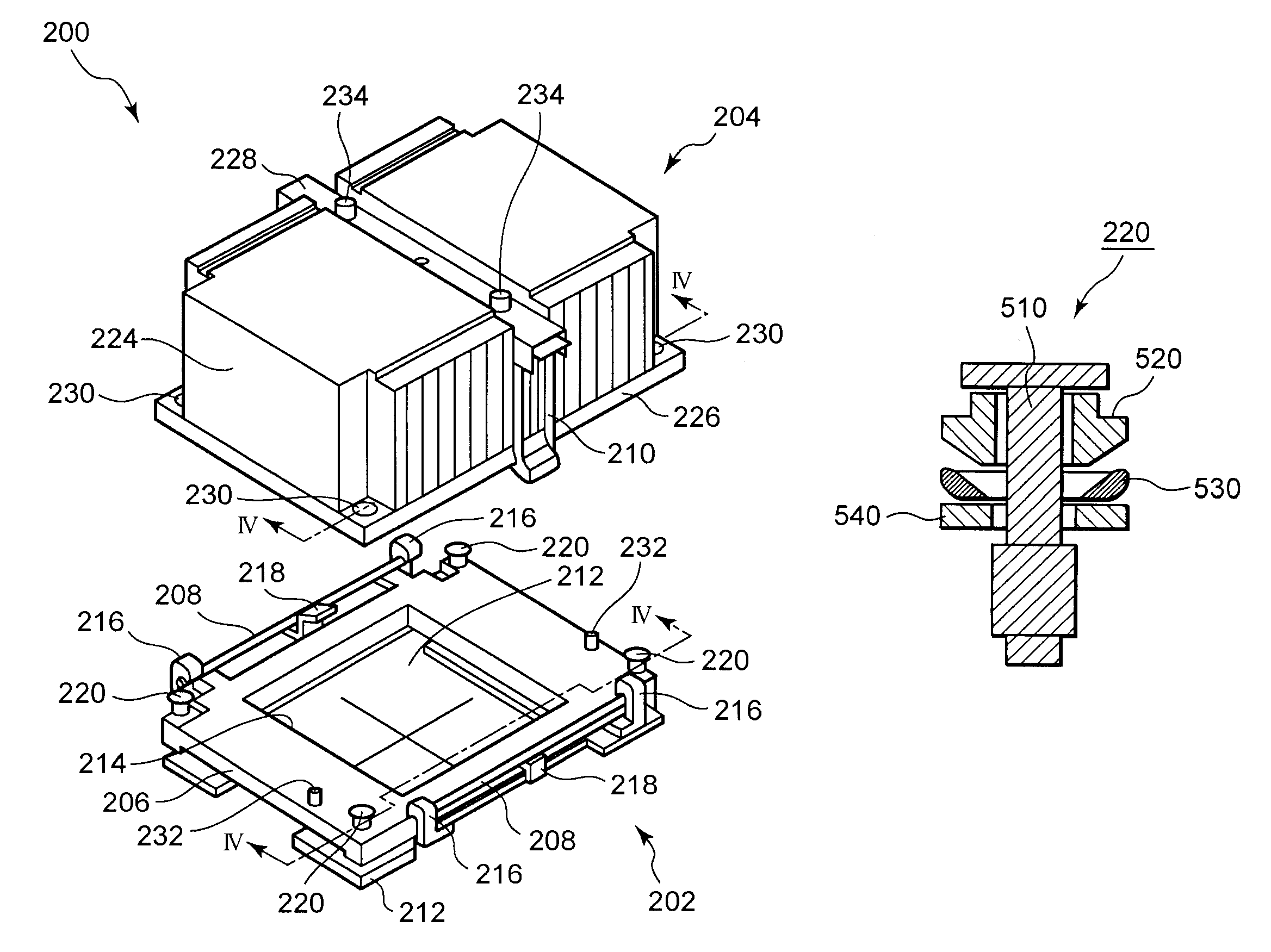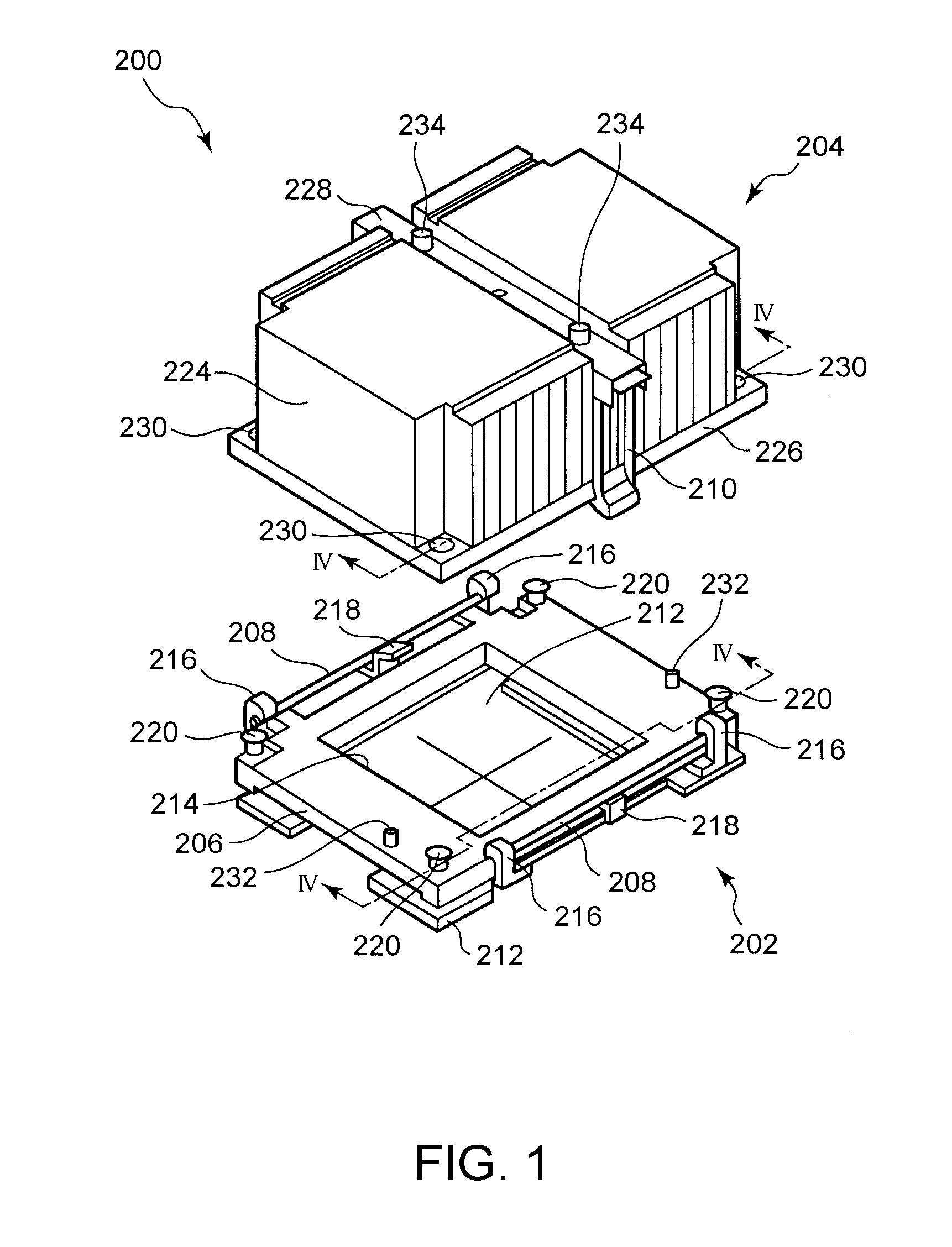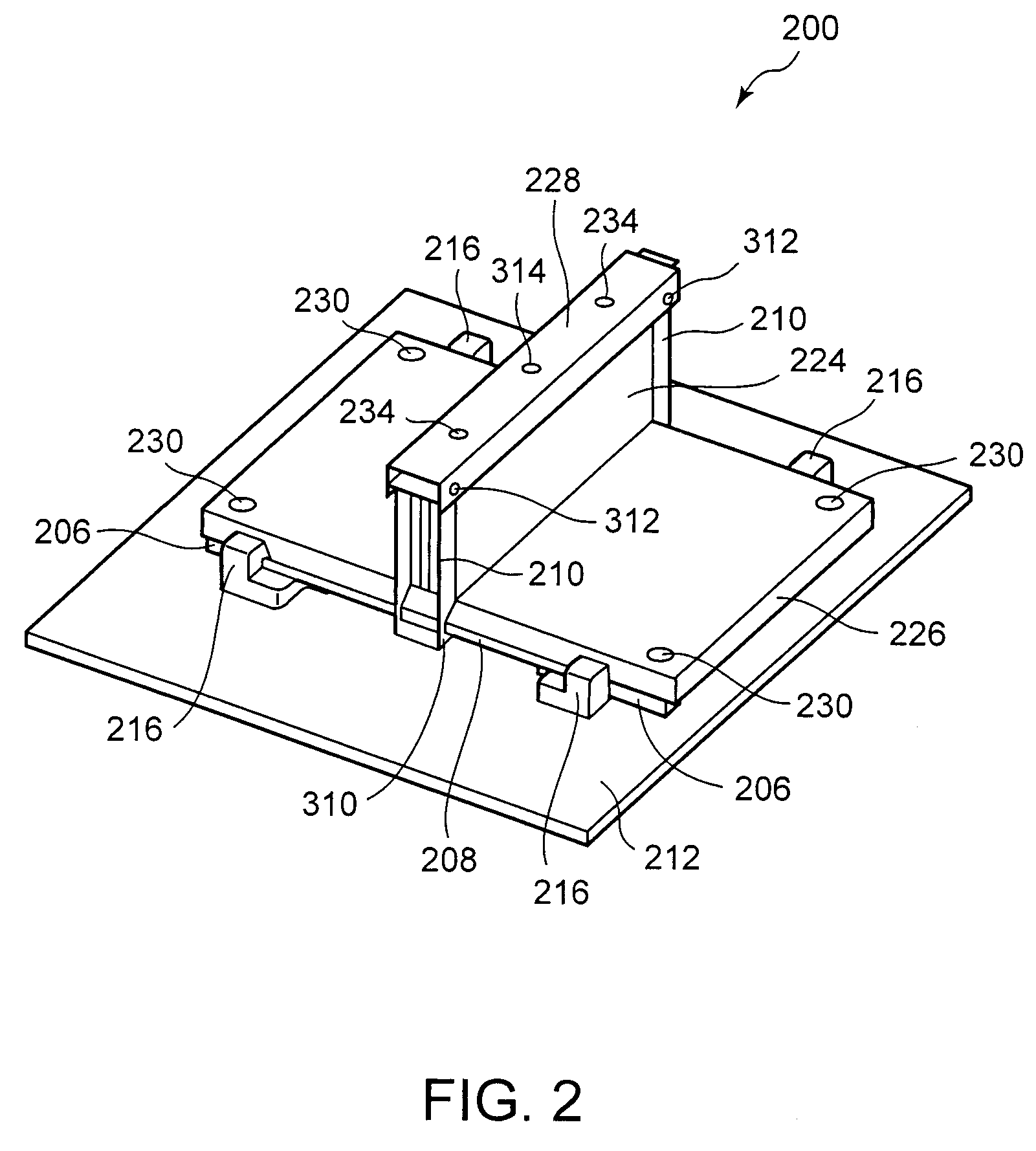Non-influencing fastener for mounting a heat sink in contact with an electronic component
a technology of electronic components and fasteners, which is applied in the direction of machine supports, furniture parts, lighting and heating apparatus, etc., can solve the problems of reducing the performance of electronic components, reliability, life expectancy, volume and mass of heatsinks, and bare dies cannot support the mass of heatsinks alone, and achieve good contact interface
- Summary
- Abstract
- Description
- Claims
- Application Information
AI Technical Summary
Benefits of technology
Problems solved by technology
Method used
Image
Examples
Embodiment Construction
[0020]The invention will now be described in more detail by way of example with reference to the embodiments shown in the accompanying figures, where like designations denote like elements. It should be kept in mind that the following described embodiments are only presented by way of example and should not be construed as limiting the inventive concept to any particular physical configuration.
[0021]Further, if used and unless otherwise stated, the terms “upper,”“lower,”“front,”“back,”“over,”“under,” and similar such terms are not to be construed as limiting the invention to a particular orientation. Instead, these terms are used only on a relative basis.
[0022]Reference is now made to FIGS. 1-3 for illustrating an exemplary heat transfer apparatus 200 incorporating a preferred embodiment of the inventive non-influencing fastener for mounting a heat sink on a heat source, such as an electronic component. FIGS. 1-3 are intended to depict the representative major components of heat tra...
PUM
 Login to View More
Login to View More Abstract
Description
Claims
Application Information
 Login to View More
Login to View More - R&D
- Intellectual Property
- Life Sciences
- Materials
- Tech Scout
- Unparalleled Data Quality
- Higher Quality Content
- 60% Fewer Hallucinations
Browse by: Latest US Patents, China's latest patents, Technical Efficacy Thesaurus, Application Domain, Technology Topic, Popular Technical Reports.
© 2025 PatSnap. All rights reserved.Legal|Privacy policy|Modern Slavery Act Transparency Statement|Sitemap|About US| Contact US: help@patsnap.com



